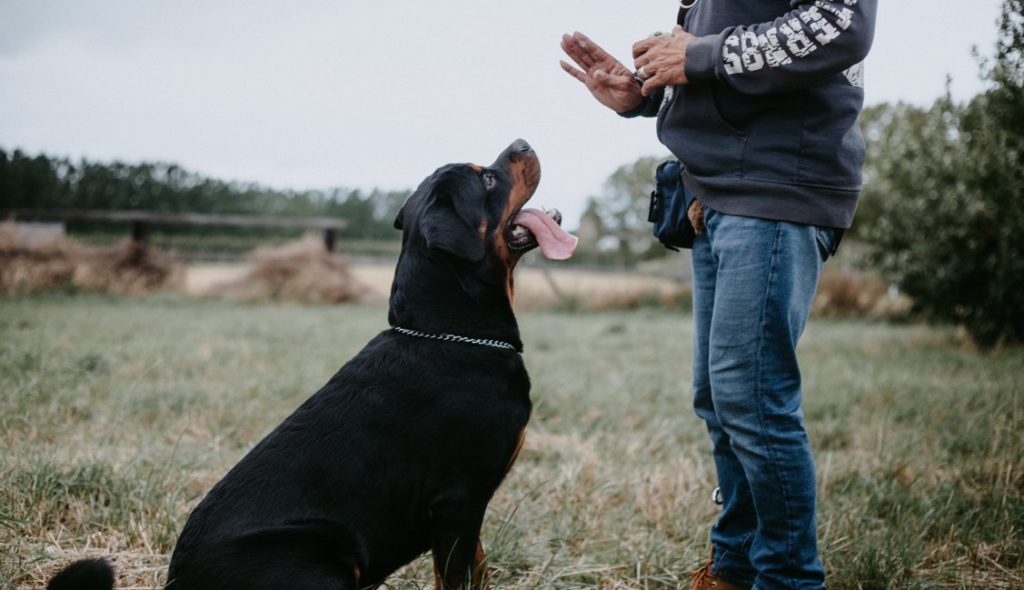Taking home a new dog is exciting. However, if you don’t train your pup, it can put a serious damper on the excitement. If your dog is out of control, you may find that owning a pet is a constant headache.
A destructive and disobedient dog is any pet owner’s worst nightmare. No one wants to have to deal with damage inside and outside their home. If you are dealing with a dog that is exhibiting behavior problems, now is the time to take action. With the help of effective pet products and the tips below, you can get the happy, well-behaved dog you have always dreamed of.
Use a Positive Tone to Enhance Training and Bonding
The first thing to remember is that when you train your dog, everything won’t be perfect. This isn’t to discourage you, but to help ensure you have a realistic understanding of how things will likely go. There are some situations that are going to be frustrating.
How you discuss and approach training will make a huge difference in not only how you feel about it but also your dog. Try to stay positive and be mindful of your tone when you talk to your pooch. Studies have shown that a high-pitched rhythmic speech increases interest and attention in what you are communicating to them and is important for relationship-building.
Fit Short Training Sessions Into Your Life Throughout the Day
Remember, training is not a one-time activity. You cannot devote eight hours of time on the weekend to training and then be done. The lessons will not stick, and you will not have effectively shown that obedience needs to be a part of your day-to-day life.
A better option is to conduct training sessions in short snippets every day. When you keep these sessions short, you will be able to take advantage of when your pup is alert and ready to learn, instead of wasting your time, trying to force your dog to train when they don’t want to. Also, shorter sessions will be easier to fit into your busy schedule.
Teach Your Dog Its Name
Choosing your dog’s name is a responsibility and a privilege. After you have selected the perfect name, it is your job to ensure that your dog knows their name and responds to it. When used properly, it will be a word that your dog associates good things with and love.
When teaching your dog its name, it is a good idea to use plenty of treats. Call their name one time in a pleasant and happy voice and then give your dog a treat and positive attention when they respond. Be sure to repeat this quick game and lesson over and over again.
Teach Your Dog the ‘Come’ Command
You will want your dog to come when called. If they do not understand the “come” command, you may have to prod them to do what you want or give in to carrying them. Teaching your dog to come when they are called is an invaluable skill not only for the convenience but to keep them out of harm’s way. Put your dog on a leash and repeat “come” and then start backing up until the dog catches you. When your dog gets to you, give them a reward and be enthusiastic with lots of praise.
Get Your Family to Help With the Training
If you want to successfully train your dog, consistency is key. The rules that are followed and enforced in your house should always be the same. This means everyone needs to be on the same page.
When bringing home a new pup, be sure to hold a family meeting and outline the house rules and behaviors you expect from your dog. After doing this, make training something that everyone can take part in. Encourage members of your household to praise good behavior and make corrections that everyone is consistent on for any misbehavior. For example, ensure that the same signals and words to communicate with your dog are used.
Use Specific Commands
Using specific commands and matching those with the desired actions during training and day-to-day will indicate to your dog what to do when you say the word or phrase. Keep things simple. Some basic words to use include “stay,” “down,” “leave it,” “come,” and “sit.” Use these words more often than just “no,” which is vague and something your dog may find open to interpretation. These more specific and short commands will let your dog know what type of behavior you expect from them.
A Trained, Well-Behaved Dog Is a Happy Dog
While training your dog may be time-consuming and frustrating at times, it will be well worth it in the long run. Keep this in mind and you will have a happy, healthy, and well-behaved dog who is a welcome new member of your family. Being informed and knowing what to do and what to avoid when training your pup will help ensure their success.

